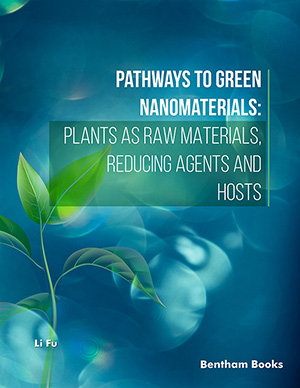Abstract
Background: Nowadays, the era is of saving energy by working efficiently and effectively. As the temperature of the atmosphere increases globally, there is a keen demand for a vapor compression refrigeration system among people, especially in a region which has fervent climatic conditions. The technology is advancing day by day, thus using the vapor compression refrigeration system efficiently is a way to contribute to saving energy.
Objective: Previously, a lot of work is carried out to boost the performance by changing the design of the evaporator, using different refrigerants, and by adopting different methods. We are now being equipped with nanotechnology in the field of refrigeration in a better way as it was earlier, nanofluids have far better heat transfer properties as compared to the vintage fluid.
Methods: In this paper, the performance improvement of a vapor compression refrigeration system has been accomplished by using Al2O3, TiO2, and CuO nanoparticles in the deionised water (DIW) as a base fluid. Three different concentrations 0.01%, 0.005% and 0.001% by wt. of oxide nanoparticles have been used at three different operating temperatures i.e. 29°C, 33°C and 37°C.
Results: The results showed that CuO nanofluids show better performance as compared to Al2O3, TiO2 nanofluids, and normal water.
Conclusion: CuO nanofluids show better results as compared to Al2O3, TiO2 nanofluid, and normal water. Therefore, we should prefer CuO nanofluid to save power consumption.
Keywords: Vapor compression refrigeration system, nanofluids, COP, air condition, nano-particles, refrigeration technology.
[http://dx.doi.org/10.1080/23744731.2018.1423802]
[http://dx.doi.org/10.1016/j.ijrefrig.2010.02.001]
[http://dx.doi.org/10.1016/S0140-7007(00)00022-0]
[http://dx.doi.org/10.1166/jon.2018.1536]
[http://dx.doi.org/10.1088/1757-899X/377/1/012155]
[http://dx.doi.org/10.1166/asem.2018.2152]
[http://dx.doi.org/10.1166/asem.2018.2149]
[http://dx.doi.org/10.1063/1.3692297 PMID: 22423855]
[http://dx.doi.org/10.1021/jp908659w PMID: 20055525]
[http://dx.doi.org/10.3390/polym11091465 PMID: 31500250]
[http://dx.doi.org/10.1016/j.ijrefrig.2012.07.002]
[http://dx.doi.org/10.1016/j.enconman.2010.07.052]
[http://dx.doi.org/10.1016/j.expthermflusci.2009.10.022]
[http://dx.doi.org/10.1016/j.powtec.2009.07.025]


























